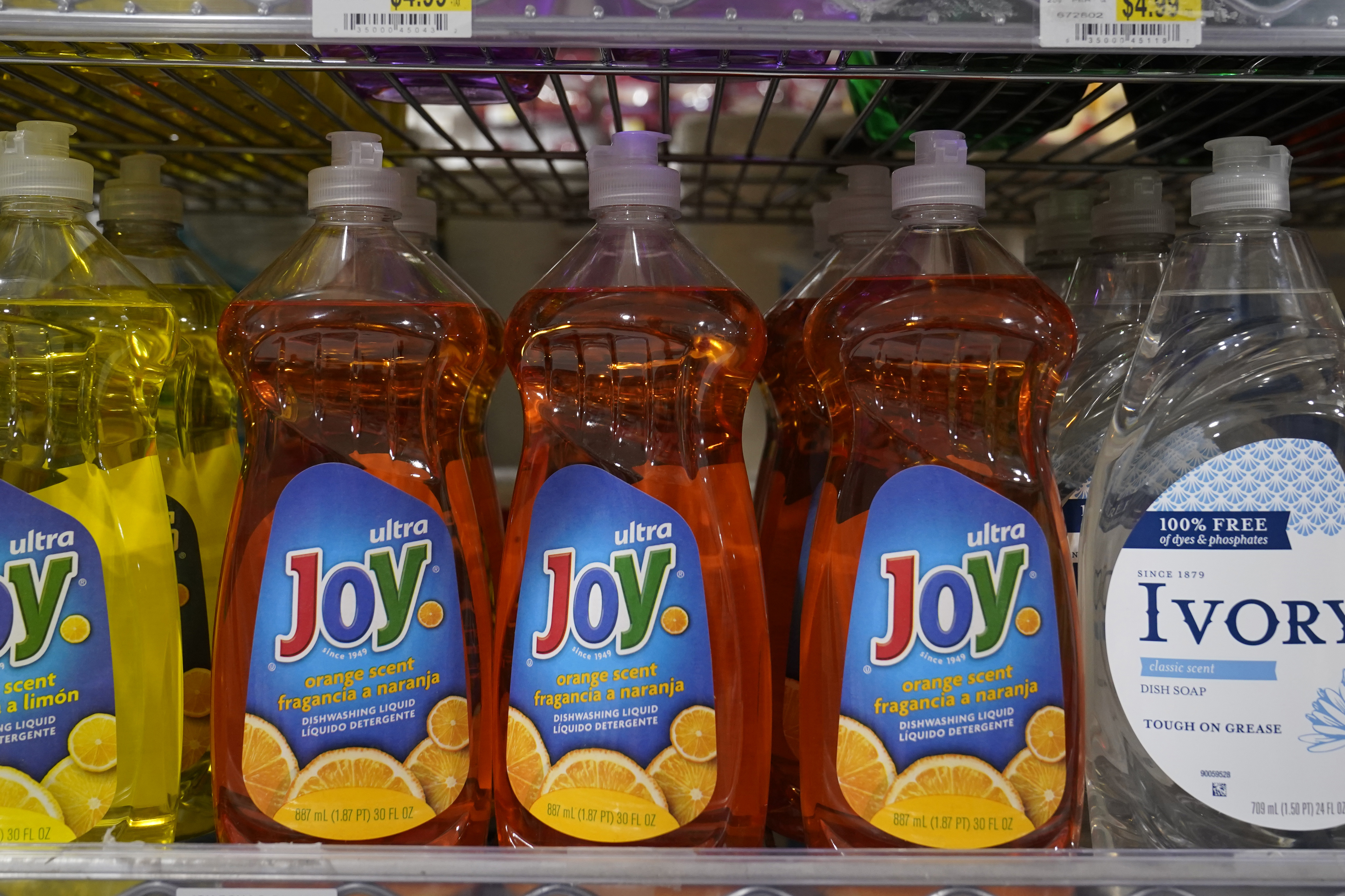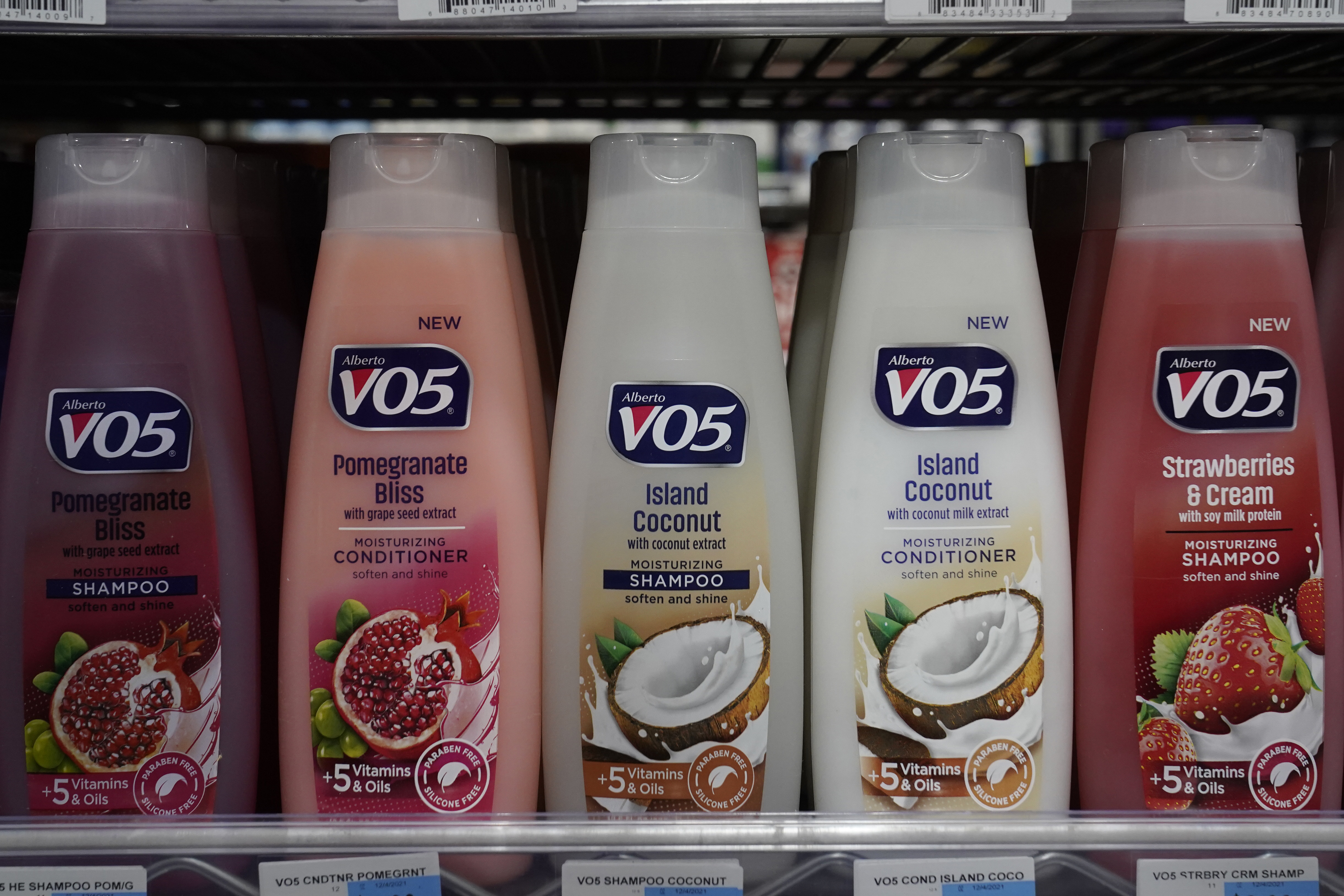SACRAMENTO, Calif. -- Companies selling shampoo, food and other products wrapped in plastic have a decade to cut down on their use of the polluting material if they want their wares on California store shelves.
Major legislation passed and signed by Gov. Gavin Newsom on Thursday aims to significantly reduce single-use plastic packaging in the state and drastically boost recycling rates for what remains. It sets the nation's most stringent requirements for the use of plastic packaging, with lawmakers saying they hope it sets a precedent for other states to follow.
"We're ruining the planet and we've got to change it," Sen. Bob Hertzberg said before voting on the bill.
Under the bill, plastic producers would have to reduce plastics in single-use products 10% by 2027, increasing to 25% by 2032. That reduction in plastic packaging can be met through a combination of reducing package sizing, switching to a different material or making the product easily reusable or refillable. Also by 2032, plastic would have to be recycled at a rate of 65%, a large jump from today's rates. It wouldn't apply to plastic beverage bottles, which have their own recycling rules.
Efforts to limit plastic packaging have failed in the Legislature for years, but the threat of a similar ballot measure going before voters in November prompted business groups to come to the negotiating table. The measure's three main backers withdrew it from the ballot after the bill passed, though they expressed concern that the plastics industry will try to weaken the requirements.
States have passed bans on single-use plastic grocery bags, straws and other items, and plastic water bottles soon won't be allowed in national parks. But the material is still ubiquitous, used in everything from laundry detergent and soap bottles to packaging for vegetables and lunch meats.
Marine animals that live off the Pacific coast, from crabs to whales, are ingesting plastics that make their way into the ocean, said Amy Wolfrum, California ocean policy senior manager at the Monterey Bay Aquarium. She called the bill a "fantastic start" to addressing a major problem.
Plastic makers would form their own industry group tasked with developing a plan to meet the requirements, which would need approval from the state's recycling department. They'll be required to collect $500 million annually from producers for a fund aimed at cleaning up plastic pollution. Maine, Oregon and Colorado have similar producer-responsibility systems.
It does not ban styrofoam food packaging but would require it to be recycled at a rate of 30% by 2028, which some supporters said is a de facto ban because the material can't be recycled. The ballot measure would have banned the material outright. It would have given more power to the state recycling agency to implement the rules rather than letting industry organize itself.
Sen. Ben Allen, who led negotiations on the bill, said it represented an example of two groups that are often at odds, environmentalists and industry, coming together to make positive change.
He called it a "strong, meaningful compromise that will put California at the forefront of addressing a major global problem."
Though they withdrew their ballot initiative, the measure's proponents said they remain concerned that industry will try to water down the bill. The initiative's three backers were Linda Escalante of the Natural Resources Defense Council; Michael Sangiacomo, former head of the waste management company Recology; and Caryl Hart, a member of the California Coastal Commission.
Joshua Baca of the American Chemistry Council, which represents the plastics industry, said the bill unfairly caps the amount of post-consumer recycled plastic that can be used to meet the 25% reduction requirement and limits "new, innovative recycling technologies."
The bill bans incineration and combustion of plastic, but leaves open the possibility for some forms of so-called chemical recycling.
Judith Enck, president of Beyond Plastics, said while California's bill goes farther than any other state when it comes to reducing plastic pollution, it still falls short. She said it will only result in about a 10% reduction in overall packaging because producers can make products refillable or switch to other materials. She also said it relies too heavily on failed plastics recycling policies.
Plastic production is supposed to triple globally by 2050, she said.
EFFORTS IN INDIA
Across the world, India banned some single-use or disposable plastic products Friday as part of a federal plan to phase out the ubiquitous material in the nation of nearly 1.4 billion people.
For the first stage, it has identified 19 plastic items that aren't considered useful but have a high potential to become litter, and it makes it illegal to produce, import, stock, distribute or sell them. These items range from plastic cups and straws to ice-cream sticks. Some disposable plastic bags will also be phased out and replaced with thicker ones.
Thousands of other plastic products, like bottles for water or soda or bags of chips, aren't covered by the ban. But the federal government has set targets for manufacturers to be responsible for recycling or disposing of them after their use.
Plastic manufacturers had appealed to the government to delay the ban, citing inflation and potential job losses. But India's federal environment minister Bhupender Yadav said at a press briefing that the ban had been in the pipeline for a year.
"Now that time is up," he said.
This isn't the first time India has considered a plastic ban. But previous iterations have focused on specific regions, resulting in varying degrees of success. A nationwide ban that includes not just the use of plastic, but also its production or importation, was a "definite boost," said Satyarupa Shekhar, the Asia-Pacific coordinator of the advocacy group Break Free from Plastic.
Most plastic isn't recycled globally and millions of tons pollute the world's oceans, impact wildlife and turn up in drinking water. Scientists are still trying to assess the risks posed by the tiny bits of broken-down plastic, known as microplastics. In 2020, more than 4.5 million tons of plastic waste was generated in India, according to its federal pollution watchdog.
The creaky waste management system in the country's burgeoning cities and villages means that much of this waste isn't recycled and ends up polluting the environment. Nearly 14 million tons of plastic waste was either littered or not recycled by the South Asian nation in 2019 -- the highest in the world, according to Our World in Data.
Making plastic releases earth-warming greenhouse gases into the atmosphere and India is home to factories that make more than 268,000 tons of disposable plastic each year. This means that reducing the manufacture and consequent waste of plastic is crucial for India to meet its target of reducing the intensity of emissions in economic activity by 45% in eight years.
A recent study identified more than 8,000 chemical additives used for plastic processing, some of which are a thousand times more potent as greenhouse gases than carbon dioxide. Products like single-use packaging, plastic resins, foamed plastic insulation, bottles and containers, among many others, add to global greenhouse emissions.
Most plastic cannot be recycled, only downgraded, and it's often incinerated or used as fuel in waste-to-energy plants, sometimes known as chemical recycling. While plastics are worth three to four times as much for fuel than as scrap, these recycling processes release more carbon dioxide into the atmosphere, adding to the greenhouse effect.
"Given the magnitude of the plastic crisis, this is too little. And it's too little both in its scope as well as the coverage," Shekhar said.
Ravi Agarwal, the director of Toxics Link, a New Delhi-based advocacy group that focuses on waste management, added that the ban was "a good beginning," but its success will depend on how well it is implemented. The actual enforcement of the law will be in the hands of individual states and city municipal bodies.
India said the banned items were identified while keeping in mind the availability of alternatives: bamboo spoons, plantain trays and wooden ice-cream sticks.
Information for this article was contributed by Kathleen Ronayne and Aniruddha Ghosal of The Associated Press.
 FILE—Plastic bottles of dish washing liquid are displayed at Compton's Market in Sacramento, Calif., Friday, June 17, 2022. California lawmakers approved a measure, on Thursday, June 30, 2022, requiring companies selling plastics used for single-use products like eating utensils, food containers and shampoo bottles to cut down their use of the polluting product by 25% if they want to continue selling in California starting the next decade. (AP Photo/Rich Pedroncelli, File)
FILE—Plastic bottles of dish washing liquid are displayed at Compton's Market in Sacramento, Calif., Friday, June 17, 2022. California lawmakers approved a measure, on Thursday, June 30, 2022, requiring companies selling plastics used for single-use products like eating utensils, food containers and shampoo bottles to cut down their use of the polluting product by 25% if they want to continue selling in California starting the next decade. (AP Photo/Rich Pedroncelli, File) FILE—Plastic bottles of shampoo are displayed at Compton's Market in Sacramento, Calif., Friday, June 17, 2022. California lawmakers approved a measure, on Thursday, June 30, 2022, requiring companies selling plastics used for single-use products like eating utensils, food containers and shampoo bottles to cut down their use of the polluting product by 25% if they want to continue selling in California starting the next decade. (AP Photo/Rich Pedroncelli, File)
FILE—Plastic bottles of shampoo are displayed at Compton's Market in Sacramento, Calif., Friday, June 17, 2022. California lawmakers approved a measure, on Thursday, June 30, 2022, requiring companies selling plastics used for single-use products like eating utensils, food containers and shampoo bottles to cut down their use of the polluting product by 25% if they want to continue selling in California starting the next decade. (AP Photo/Rich Pedroncelli, File)